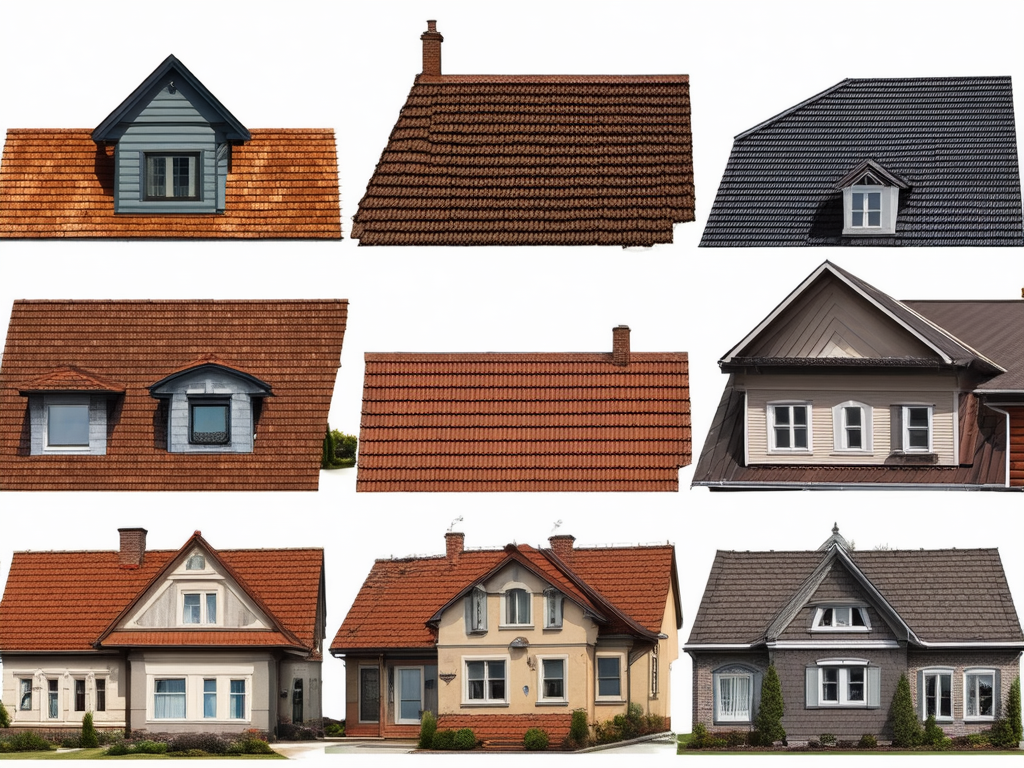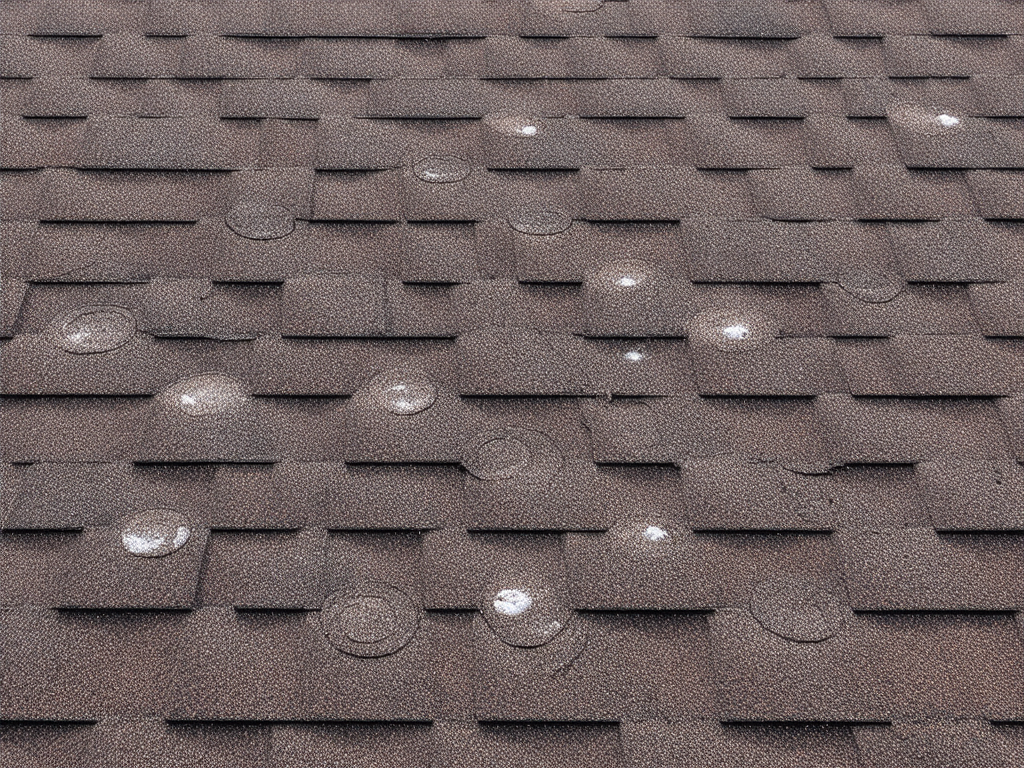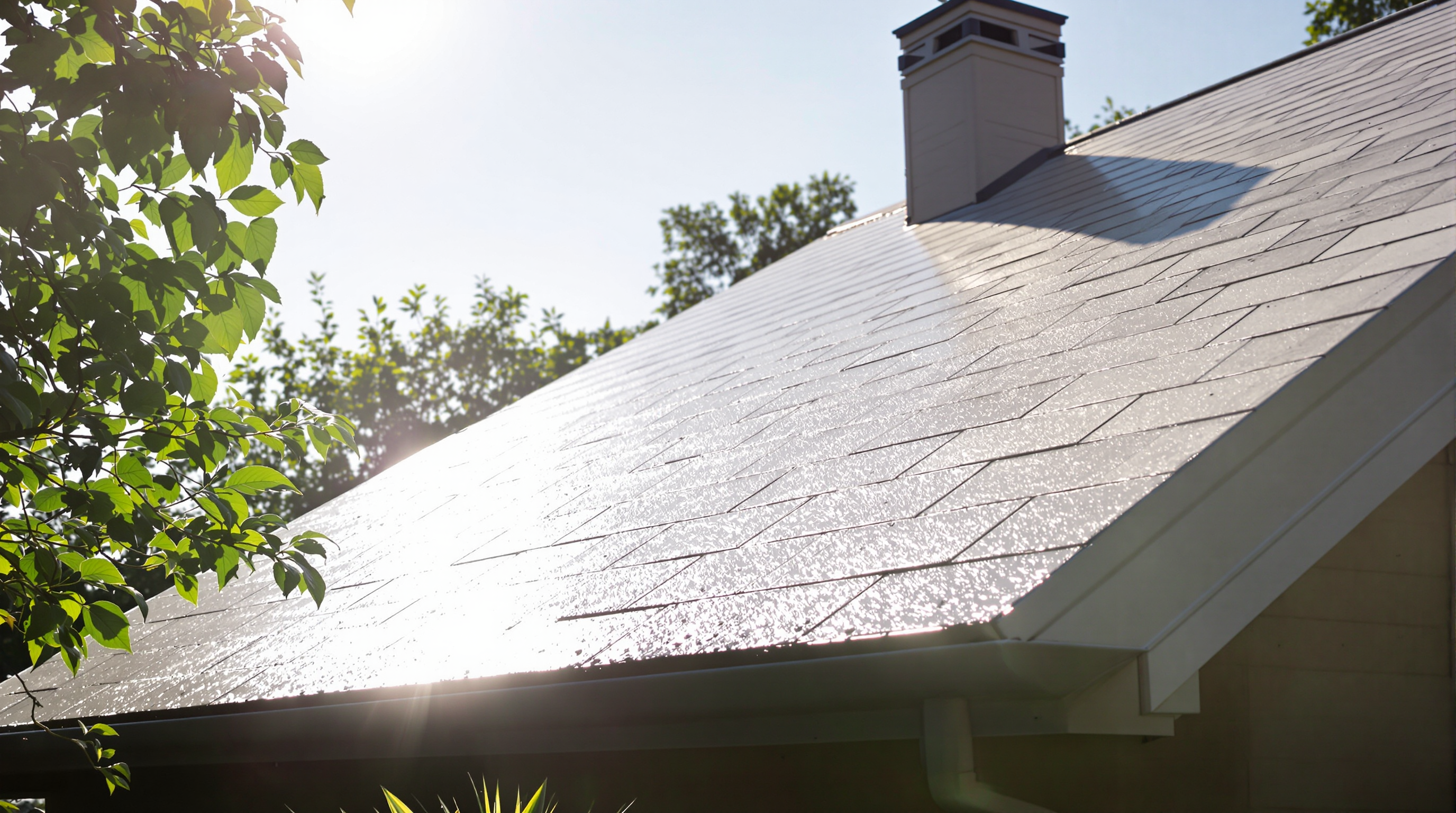Ultimate Guide: How Often to Clean Your Roof (Expert Timeline & Tips)
Did you know that neglecting roof cleaning can cut your roof's lifespan by up to 50%? While many homeowners assume rain keeps their roof clean, this common misconception leads to thousands in preventable damage each year. Regular roof cleaning isn't just about curb appeal – it's about protecting one of your home's most valuable assets.
Your roof silently endures everything nature throws at it, from harsh UV rays to organic growth like moss and algae. Without proper maintenance, these elements can significantly damage your roofing materials. In fact, proactive maintenance costs just 14 cents per square foot annually, while reactive repairs average 25 cents – a difference that adds up quickly across your entire roof.
In this comprehensive guide, you'll discover exactly how often different roof types need cleaning, which methods work best, and how to save money while extending your roof's life. We'll debunk common myths, explore eco-friendly cleaning solutions, and provide practical maintenance schedules based on your specific situation. Whether you're a new homeowner or looking to optimize your roof care routine, this guide will help you make informed decisions about your roof's maintenance needs.
- Understanding Roof Cleaning
- Debunking Common Roof Cleaning Myths
- Practical Guide to Roof Cleaning Frequency
- Roof Cleaning Methods and Best Practices
- Conclusion and Maintenance Tips
Understanding Roof Cleaning
Maintaining a clean roof is crucial for the longevity and aesthetics of your home. Regular roof cleaning not only enhances curb appeal but also prevents damage from organic growth, such as moss and algae. This proactive approach can prevent costly repairs and premature roof replacement. Consider scheduling a Get Your Roof Assessment to determine the current state of your roof.
Importance of Regular Roof Maintenance
Regular roof maintenance is essential for preventing structural damage and extending the life of your roof. A clean roof helps prevent debris buildup, which can trap moisture and encourage the growth of mold and algae. These organisms can degrade roofing materials, leading to leaks and other expensive problems. Regular cleaning also allows you to find and fix small problems early, avoiding more serious damage.
| Cleaning Frequency Criteria | Recommended Frequency |
|---|---|
| Humid or Shady Areas | Every 1-2 Years |
| Heavy Tree Coverage | Every 1-2 Years |
| Regular Conditions | Every 1-5 Years |
Benefits of Regular Cleaning
- Prevention of Organic Growth: Regular cleaning prevents moss, algae, and lichen from growing and spreading on your roof. Cleaning at least once a year can significantly reduce organic growth. In humid or shady areas, more frequent cleanings might be necessary. Learn more about roof maintenance for a deeper understanding of preventative measures.
- Early Damage Detection: Routine inspections, ideally twice a year in spring and fall, can identify minor issues before they become major problems. These inspections might include checking for missing or damaged shingles, looking for rust or corrosion, and cleaning gutters to prevent water buildup. Spring and fall are the best times for these inspections to assess winter damage and prepare for the next season.
- Cost-Effectiveness: Proactive roof maintenance costs an average of 14 cents per square foot annually. Reactive maintenance, on the other hand, costs around 25 cents per square foot each year. Regular cleaning can save you money on major repairs over time.
Common Roof Materials and Their Cleaning Needs
Different roofing materials have different cleaning needs based on their composition and the environment. Understanding these differences can help you tailor your maintenance routine to your specific roof type.

Asphalt Shingles
Asphalt shingles are the most popular roofing material due to their durability and affordability. They typically need cleaning every 1–5 years, depending on the local climate and surrounding vegetation. While some roofs may not show problems for five years, more frequent cleaning is generally recommended, especially in humid climates or areas with lots of trees.
Metal Roofs
Metal roofs are known for lasting a long time and requiring minimal maintenance. They typically need cleaning every 1–10 years, depending on environmental conditions and debris. Regular cleaning helps maintain the roof's appearance and prevents premature wear and tear.
Tile Roofs
Tile roofs (clay or concrete) need cleaning every 1–2 years to prevent organic buildup and maintain their structure. Regular cleaning preserves their appearance and prevents water damage.
Wood and Synthetic Roofs
Wood and synthetic roofs require careful maintenance to prevent damage from moisture and organic growth. Cleaning is recommended every 1–2 years, but this may vary depending on environmental factors like humidity and tree cover.
By understanding the specific cleaning needs of your roof, you can plan your maintenance schedule and protect your home from potential damage. The average cost of a standard roof cleaning is $458, typically ranging from $295 to $622. The actual cost depends on factors like roof size, type, and cleaning method.
Debunking Common Roof Cleaning Myths
Roof cleaning is often shrouded in misconceptions that can lead to neglect and damage. Understanding the truth behind these myths is crucial for maintaining a healthy and long-lasting roof.
| Myth | Reality |
|---|---|
| Rain Naturally Cleans Your Roof | Rain only removes loose debris; regular cleaning is needed for moss and algae. |
| Roof Cleaning is Only Cosmetic | Cleaning is essential for structural integrity and longevity. |
| All Roof Cleaning Methods Are the Same | Different methods suit different materials; soft washing is often safer. |
Myth: Rain Naturally Cleans Your Roof
Many believe rain sufficiently cleans their roofs. This is a myth. Rain can wash away loose debris like leaves, but it doesn't remove moss, algae, and lichen. These organisms thrive on roofs, especially in humid climates, and retain moisture, leading to rot, decay, and premature aging. Regular roof cleaning, generally every 1–2 years, prevents this buildup. Consider more frequent cleanings in areas with heavy tree coverage or high humidity. For a personalized assessment, Get Your Roof Assessment.
Myth: Roof Cleaning is Only Cosmetic
Some think roof cleaning is purely for aesthetics. This is false. Roof cleaning is crucial for structural integrity. While a clean roof improves curb appeal, the benefits are much deeper. Debris and organic growth trap moisture, causing water damage, rot, and even structural problems, reducing the lifespan of roofing materials. Neglecting cleaning can lead to premature aging and costly repairs or replacement. Regular cleaning, often recommended every 1-2 years, prevents these issues. This preventative maintenance saves money long-term.
Myth: All Roof Cleaning Methods Are the Same
Different roof cleaning methods exist, and choosing the wrong one can be harmful. High-pressure washing can damage materials, especially asphalt shingles, by stripping away protective granules. Soft washing, however, uses low-pressure water and cleaning agents formulated for various roofing materials to safely remove dirt and organic growth. Understanding these differences helps homeowners select the safest and most appropriate cleaning technique.
Practical Guide to Roof Cleaning Frequency
Roof cleaning is essential for home maintenance. It extends your roof's lifespan and keeps it looking good. How often you clean your roof depends on several factors, including your roof type, the environment, and your local climate. Regular cleaning prevents damage from moss, algae, and debris. Consider using our Get Your Roof Assessment for a personalized evaluation.

Factors Affecting Cleaning Frequency
Several factors influence how often you should clean your roof.
Roof Type
The roofing material is a key factor. Tile and metal roofs typically need cleaning every 1-2 years. These materials are less susceptible to moss and algae than asphalt shingles.
Environment
Your surroundings also matter. Homes near many trees or in humid areas may need more frequent cleanings. More trees mean more leaves and branches on your roof, which can lead to faster decay.
Climate
Local climate conditions, like frequent rain or snow, can also increase the need for roof cleaning. This helps prevent moss and algae growth.
Recommended Cleaning Schedules by Roof Type and Region
Knowing the best cleaning schedule for your roof type helps maintain its lifespan.
Asphalt Shingle Roofs
Asphalt shingle roofs usually need cleaning every 1-5 years.
Metal Roofs
Metal roofs require less frequent cleaning, typically every 1-10 years.
Tile Roofs
Tile roofs benefit from cleaning every 1-2 years, especially in humid areas or places with lots of trees.
Other Roof Types and Regional Considerations
Wood and synthetic roofs have varying cleaning schedules depending on their makeup. Regions with harsher climates or more trees, like the Pacific Northwest, may require more frequent cleanings. Regular roof inspections, especially after storms or high winds, are always recommended. Gutters should be cleaned twice a year, in spring and fall.
Signs Your Roof Needs Cleaning
Recognizing when your roof needs cleaning is important.
Discoloration
Dark stains or discoloration indicate algae or moss. Professional cleaning is necessary to prevent damage. These stains can be black, green, or brown.
Debris Buildup
Excessive debris like leaves and branches traps moisture and encourages mold growth, harming your roof's structure.
Regular Inspections
Even without visible damage, regular inspections, ideally twice a year, are crucial. These inspections help catch potential problems early.
Cost Implications of Roof Cleaning
Roof cleaning costs vary based on roof size, material, and cleaning method.
Average Costs
Homeowners typically spend between $295 and $622 for standard roof cleaning, averaging $458. More thorough cleanings like soft washing or chemical treatments can cost between $500 and $1,000.
Cost vs. Value
While cost matters, the cleaning method should suit your roof type and the level of cleaning needed. Regular roof cleaning saves money long-term by extending your roof's life and preventing costly repairs.
Roof Cleaning Methods and Best Practices
Maintaining your roof's longevity and appearance depends heavily on regular cleaning. This section guides you through best practices, from choosing between DIY and professional cleaning to using the right tools and techniques for various roofing materials.
DIY vs. Professional Cleaning
Choosing between DIY and professional roof cleaning requires careful consideration. While DIY may seem cheaper, it can lack the thoroughness and safety of professional services. Professional roof cleaners utilize specialized equipment like pressure washers with adjustable nozzles and soft washing systems. Professionals possess the expertise and equipment to handle various roofing materials without causing damage.
| DIY vs Professional | Advantages | Disadvantages |
|---|---|---|
| DIY Cleaning | Cost-effective, convenient | Potential for damage, safety risks |
| Professional Cleaning | Expertise, thoroughness, safety | Higher cost |
Recommended Tools and Techniques for Different Materials
Different roofing materials require specific cleaning tools and techniques. Asphalt shingles require a soft washing approach. Metal roofs benefit from pressure washing with a wide spray nozzle to prevent denting. Tile roofs require a gentle water stream and a non-abrasive brush to avoid cracking.
Environmentally Friendly Cleaning Solutions
Eco-conscious homeowners are increasingly seeking environmentally friendly roof cleaning solutions. Biodegradable detergents offer an effective way to remove algae and moss without harming surrounding plants or waterways. Natural alternatives like vinegar and baking soda can also effectively combat organic growth.
Safety Tips for Roof Cleaning
Prioritize safety during roof cleaning, whether you choose DIY or professional services. Always use a sturdy ladder with a stabilizer and wear non-slip shoes. Consider a safety harness for two-story houses or higher. When using chemicals, wear protective gear like gloves and goggles.
Conclusion and Maintenance Tips
This section summarizes the key benefits and strategies for maintaining a clean and functional roof. It also highlights the long-term cost savings associated with regular roof maintenance.
Benefits of a Clean Roof
A clean roof is more than just visually appealing; it's vital for your home's structural integrity and energy efficiency. Regular cleaning prevents the buildup of moss, algae, and debris, which can lead to significant damage over time. Much like regular teeth brushing prevents cavities, consistent roof cleaning prevents larger, more expensive problems down the road.
Preventing Damage and Extending Roof Lifespan
Neglecting roof cleaning can lead to the deterioration of roofing materials, potentially requiring premature replacement. A clean roof also improves energy efficiency. By ensuring the roofing materials are free from debris and organic growth, they can better reflect sunlight and heat, potentially lowering your energy bills.

Long-term Maintenance Strategies
Maintaining a roof in top condition involves long-term strategies, including regular inspections and cleanings. Roofs generally need cleaning every 1-2 years, depending on the material and environmental factors.
Material-Specific Cleaning Schedules
- Shingle Roofs: Shingle roofs may require cleaning every 1-5 years.
- Metal Roofs: Metal roofs might need cleaning every 1-10 years because they are less susceptible to moss and algae.
Importance of Regular Inspections
Inspections should ideally occur twice a year, in spring and fall, to assess winter damage and prepare for harsh weather, respectively. These inspections should include checking for missing or damaged shingles, clogged gutters, and signs of moss or algae growth.
Cost Savings from Regular Maintenance
Regular roof maintenance isn't just about preventing damage; it's a cost-effective strategy. Proactive maintenance costs around 14 cents per square foot annually, compared to about 25 cents per square foot for reactive maintenance.
Long-term Savings Potential
After 21 years, proactive maintenance can save up to $236,750 (commercial roofs). While all roofs eventually need replacement, proactive maintenance significantly extends their lifespan. Investing in regular cleaning and inspections ensures roofs last longer, perform better, and cost less over time.
Disclaimer: This blog post is intended for informational purposes only and should not be considered professional roofing advice. Always consult with qualified roofing contractors and insurance professionals for specific guidance regarding your individual circumstances.
